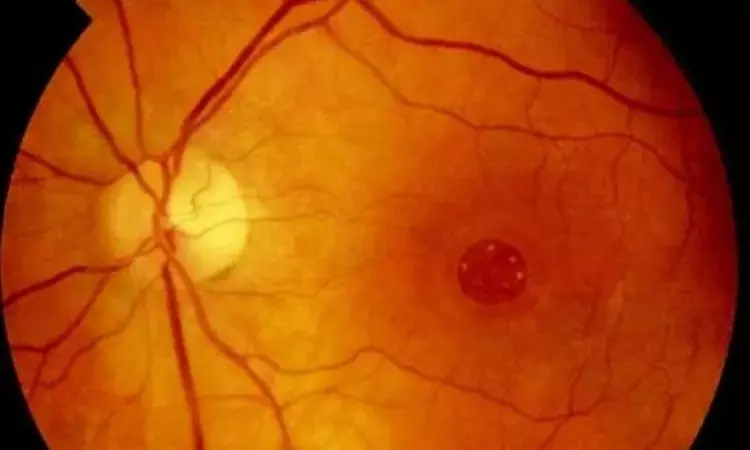- Home
- Medical news & Guidelines
- Anesthesiology
- Cardiology and CTVS
- Critical Care
- Dentistry
- Dermatology
- Diabetes and Endocrinology
- ENT
- Gastroenterology
- Medicine
- Nephrology
- Neurology
- Obstretics-Gynaecology
- Oncology
- Ophthalmology
- Orthopaedics
- Pediatrics-Neonatology
- Psychiatry
- Pulmonology
- Radiology
- Surgery
- Urology
- Laboratory Medicine
- Diet
- Nursing
- Paramedical
- Physiotherapy
- Health news
- Fact Check
- Bone Health Fact Check
- Brain Health Fact Check
- Cancer Related Fact Check
- Child Care Fact Check
- Dental and oral health fact check
- Diabetes and metabolic health fact check
- Diet and Nutrition Fact Check
- Eye and ENT Care Fact Check
- Fitness fact check
- Gut health fact check
- Heart health fact check
- Kidney health fact check
- Medical education fact check
- Men's health fact check
- Respiratory fact check
- Skin and hair care fact check
- Vaccine and Immunization fact check
- Women's health fact check
- AYUSH
- State News
- Andaman and Nicobar Islands
- Andhra Pradesh
- Arunachal Pradesh
- Assam
- Bihar
- Chandigarh
- Chattisgarh
- Dadra and Nagar Haveli
- Daman and Diu
- Delhi
- Goa
- Gujarat
- Haryana
- Himachal Pradesh
- Jammu & Kashmir
- Jharkhand
- Karnataka
- Kerala
- Ladakh
- Lakshadweep
- Madhya Pradesh
- Maharashtra
- Manipur
- Meghalaya
- Mizoram
- Nagaland
- Odisha
- Puducherry
- Punjab
- Rajasthan
- Sikkim
- Tamil Nadu
- Telangana
- Tripura
- Uttar Pradesh
- Uttrakhand
- West Bengal
- Medical Education
- Industry
Deficits continue to progress in Pentosan Polysulfate-associated maculopathy even after drug cessation

Pentosan polysulfate (PPS) (Elmiron; Janssen Pharmaceuticals), a treatment for interstitial cystitis, is a heparinlike macromolecule that is associated with a distinctive maculopathy. Prior retrospective studies reported limited data on the long-term disease course of PPS-associated maculopathy after drug cessation. To better understand this condition, Jung EH and team performed comprehensive assessments of retinal function and structure in a natural history cohort of patients with maculopathy associated with PPS4 reporting 2-year outcomes.
This cohort study prospectively evaluated the natural history of patients with maculopathy associated with PPS use. Participants seen at the Emory Eye Center were enrolled between December 1, 2018, and December 1, 2019, and data were collected through November 30, 2021. The main outcomes were changes in visual function and structure. Visual function was assessed annually with refraction and Early Treatment Diabetic Retinopathy Study (ETDRS) best-corrected visual acuity (BCVA), mesopic microperimetry, and dark adaptometry. Structural outcomes included presence and extent of complete retinal pigment epithelium and outer retinal atrophy (cRORA), macular central subfield thickness (CST), and subfoveal choroidal thickness (SFCT).
- Of the 12 participants (23 eyes), 11 (91.7%) were female (1 [8.3%] male), 11 (91.7%) were White (1 [8.3%] Black), and median (IQR) age at enrollment was 58 (47-64) years.
- Median (IQR) time from PPS discontinuation to initial visit was 0.6 (0.4-1.9) years.
- Median baseline ETDRS BCVA letter score was 83 (Snellen equivalent, 20/20), with a median 2-year change of −3 (P = .08).
- Four eyes (17.4%) had a letter score decline of 15 or more, all associated with progressive cRORA.
- Median change in microperimetry average threshold was −3.5 dB (P = .001), and percent reduced threshold was 32.5% (P = .004).
- Nine eyes (39%) had macular cRORA at baseline, with a median linearized growth rate of 0.23 mm/y (IQR, 0.22-0.25 mm/y).
- Two eyes (8.7%) without atrophy at baseline developed new-onset cRORA.
- Median baseline CST was 284 μm, with a median 2-year change of −5 μm (P = .0497). Median 2-year change in SFCT was 1 μm (P = .91).
This cohort study was a comprehensive prospective assessment of the maculopathy associated with PPS use. The findings revealed declines in multiple measures of retinal function and structure for over 2 years after drug cessation. Eyes with cRORA showed continued growth of atrophy, while other eyes developed new-onset cRORA during the 2-year study. Median CST also showed small declines.
The findings of this 2-year longitudinal cohort study of 12 participants suggest that the maculopathy associated with PPS use can continue to progress after drug cessation. Additional studies may determine whether these results can be generalized to other patients with PPS-associated maculopathy, and longer follow-up could determine the subsequent disease course.
Source: Jung EH, Lindeke-Myers A, Jain N. Two-Year Outcomes After Variable Duration of Drug Cessation in Patients With Maculopathy Associated With Pentosan Polysulfate Use. JAMA Ophthalmol. Published online February 02, 2023. doi:10.1001/jamaophthalmol.2022.6093
Dr Ishan Kataria has done his MBBS from Medical College Bijapur and MS in Ophthalmology from Dr Vasant Rao Pawar Medical College, Nasik. Post completing MD, he pursuid Anterior Segment Fellowship from Sankara Eye Hospital and worked as a competent phaco and anterior segment consultant surgeon in a trust hospital in Bathinda for 2 years.He is currently pursuing Fellowship in Vitreo-Retina at Dr Sohan Singh Eye hospital Amritsar and is actively involved in various research activities under the guidance of the faculty.
Dr Kamal Kant Kohli-MBBS, DTCD- a chest specialist with more than 30 years of practice and a flair for writing clinical articles, Dr Kamal Kant Kohli joined Medical Dialogues as a Chief Editor of Medical News. Besides writing articles, as an editor, he proofreads and verifies all the medical content published on Medical Dialogues including those coming from journals, studies,medical conferences,guidelines etc. Email: drkohli@medicaldialogues.in. Contact no. 011-43720751


